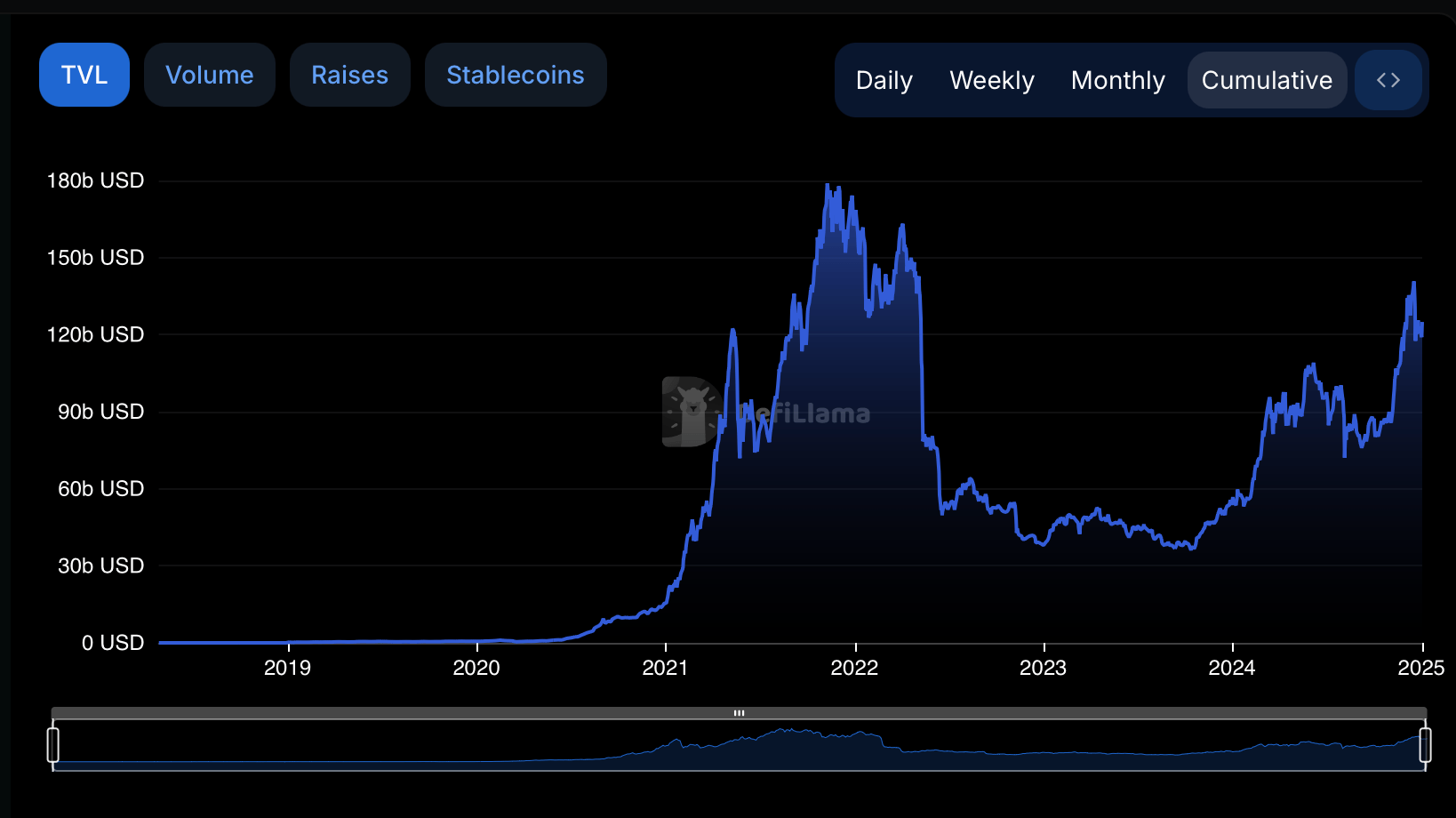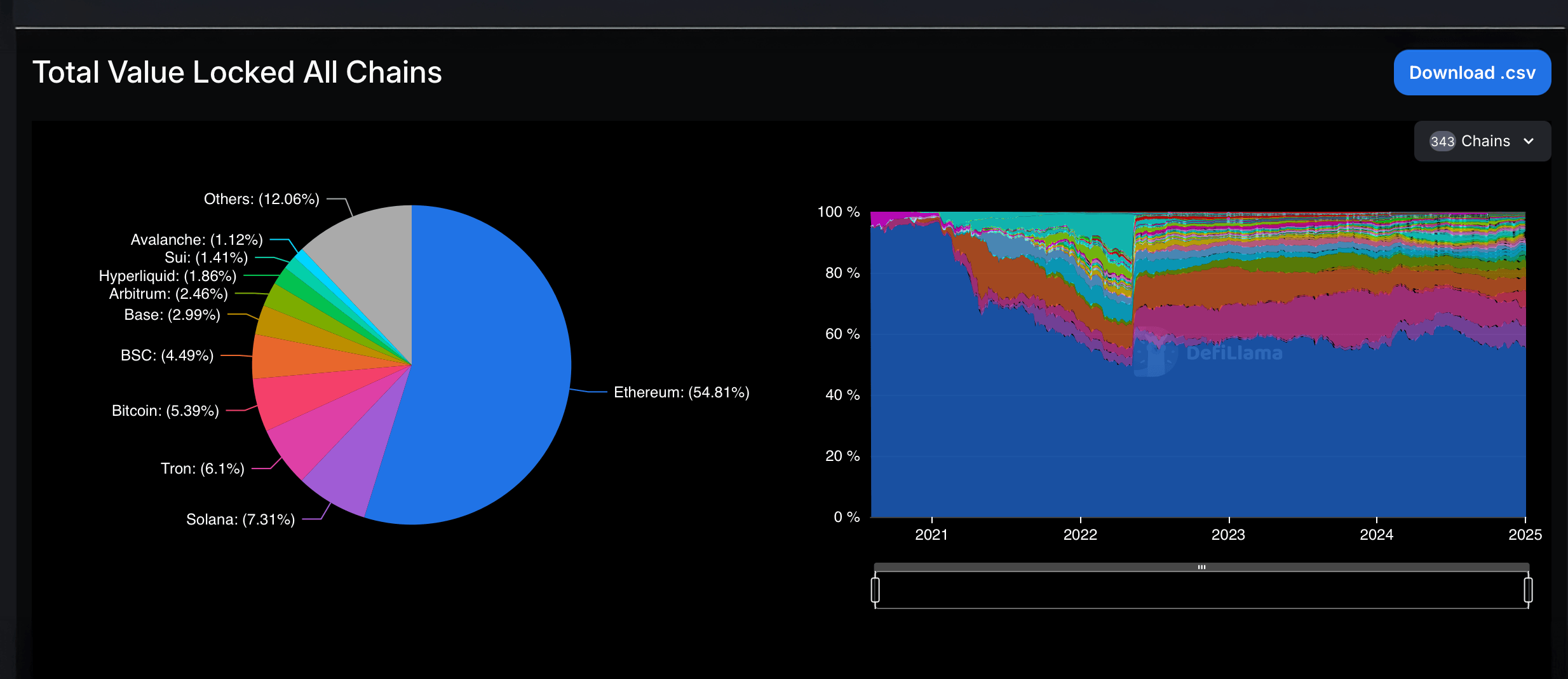Year-end data shows an exciting increase in the total value captured in decentralized finance (defi), which is up 133.8% over the past year. December capped off this exciting trend with a flurry of activity, as defi and onchain protocols generated more than $1.5 billion in total revenue over the past 30 days, as reported by Defillama.
The total value of Defi will increase by more than 130% by 2024
Defillama, a leading analytics hub and data collector for the defi sector, revealed that stablecoin issuers topped the revenue charts over the past 30 days, raking in $664.12 million. This update was shared by Defillama on January 2, 2025, as the company noted:
Defi and onchain protocols have amassed a total of over $1.5 billion in revenue over the past 30 days. Of this, more than 80% went to Stablecoin Issuers, Chains, Dexes, Telegram Bots and Launchpads. Stablecoin Issuers alone accounted for 43.7% of revenue.
Defi saw dynamic expansion in 2024, with total value locked (TVL) rising 133.8% from $53.369 billion to a hefty $124.773 billion. In the first week of January 2024, liquid strike leader Lido had a TVL of approximately $21.33 billion. Fast forward to today, January 2, 2025, and that figure has risen to $33.573 billion. Alongside this growth in TVL, there has been a notable realignment of key defi protocols.

At the time, TVL’s heavyweight champions were Lido, Makerdao (now renamed Sky), Aave, Justlend and Uniswap. As of January 2025, the leaders are Lido, Aave, Eigenlayer, Ether.fi and Binance’s Staked Ether protocol.
Sky, once second, has now fallen to tenth place. As of today, in 2025, Ethereum holds a dominant 54.82% of the TVL in defi, while Solana holds 7.34% and Tron 6.09%. Bitcoin is in fourth place, securing 4.5% and a value of $6.669 billion.

As 2025 begins, the decentralized finance landscape is not only celebrating a remarkable year of growth in 2024, but also positioning itself for future innovations. With TVL soaring and earnings reaching new heights in December, defi continues to evolve, reshaping financial ecosystems worldwide.
This dynamic shift signals a maturing market, poised to welcome broader adoption and deeper integration across industries in the coming years.


